TRESE is a series close to my heart, what really drew me into the komiks was the action and use of the source material. When I heard about its upcoming anime adaptation I, as well as many other fans, expected a lot.
And I wasn’t disappointed.
There is so much in the show to think about, mysteries on top of mysteries, the use of folklore as an inspiration and all with the use of amazing art direction.
TRESE did a good job condensing what was in the komiks while adding just enough to streamline the adaptation in a new media. The writing in particular took the very best parts of the source material and gave it new life, smoothly integrating the dialogue and the plot into a new experience. The animation itself was very fluid which added to the suspense.
The character of Alexandra Trese seems less invincible in TRESE, compared to the graphic novels. There is a struggle in her character that is very refreshing to see. That vulnerability really makes you root for her character all the more.
The 18+ rating of TRESE really helps drive the point that this isn’t just your regular show. The blood and gore were not there just as window dressing but actively added to the atmosphere of what TRESE is trying to achieve.
=———————————————————————————-=
Trese and Real-life Mythology
The new TRESE series takes inspiration from different mythical creatures from the Philippines – read on to see the inspirations behind the creatures of TRESE.

The White Lady of Balete Drive
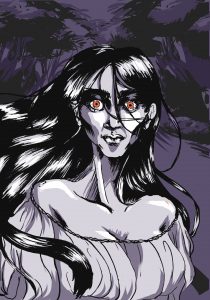
White lady of Balete Drive Illustration by Shiela Rae Co
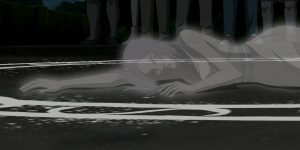
TRESE Episode 101 of TRESE Cr. COURTESY OF NETFLIX © 2021
The White Lady of Balete Drive is beautiful lady with long hair (Sometimes covering the face) wearing a white flowing dress (like that of a gown) slightly covered with bloodstains or dirt or with a face bathed in blood.
There are many versions of this urban legend:
Some say a woman was raped at the same spot as Balete drive by Japanese soldiers in WWII. The ghost remains to avenge.
Another version is that the White Lady was a student of the University of the Philippines. While on her way to Balete Drive from school, she was raped by a cab driver and her body was dumped in the area. She appears to most cab drivers because she allegedly wants to seek revenge.
While another says a woman was driving in Balete drive when she crashed her car, resulting in her death.
In TRESE the White Lady of Balete Drive has been victimized twice – her ghost becoming a casualty in something bigger.
Nuno sa Punso

Nuno sa Punso Illustration colored by Tara Singson
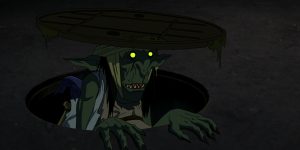
ERIC BAUZA as NUNO THE SNITCH in episode 101 of TRESE Cr. COURTESY OF NETFLIX © 2021
The Nuno sa Punso (Grandfather of the mound) is an old man. Very small. Has a long beard and is hunchbacked. Reddish skin. Is sometimes seen holding a staff. He steals pretty girls from villages and offers jewels or gold for them to live with him.
“Tabi, tabi po baka kayo mabunggo” (Excuse me lest I bump you) is a polite way to pass through his domain – the nuno can be grazed and retaliate with fever or skin rashes.
Offerings of food are made to the nuno to gain their favor, in TRESE this is done through chocnut – a peanut milk chocolate candy. In most legends you would have to offer chickens, or other types of food.
In TRESE the Nuno has a servant called the Laman Lupa (What is in the earth). This is a collective term for dwarfs, gnomes, goblins, and other underground-dwellers in the Tagalog areas of Luzon. The duwende and the nuno belong to this group. While in TRESE this refers to an elemental made out of earth that is subservient to the Nuno.
Aswang

Aswang Illustration by Kim Santiago
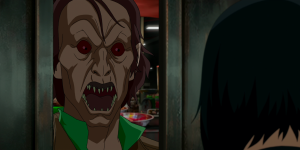
Part of the plot of Trese revolves around Aswang tribes, but what is an Aswang?
The term aswang is prolific in Philippine mythology. It may refer to a specific kind of monster with specific traits, yet it may also be a catch-all term for any kind of monster. The term aswang is used by various ethno-linguistic groups, with some of them having no similarities whatsoever to the creatures they describe. An aswang in the north may be different from an aswang in the southern part of the Philippines.
When ‘aswang’ is translated it is usually done by calling it a ‘witch’, possessing supernatural powers that they use to spread terror.
The general physical aspects of an aswang includes having a long, hollow tongue, sharp claws, sharp teeth, beautiful if in human form and bestial if shapeshifted. By day the Aswang looks tired and pale, because they lack proper sleep as they are nocturnal.
Becoming an Aswang
Francis X. Lynch describes 4 ways of becoming an Aswang which are as follows:
Personal Effort
There are certain rituals that can turn one into an Aswang – if the subject is willing.
The first ritual is to hold a fertilized chicken egg against one’s belly and then tie it in place with a piece of cloth around the body. After some time, the chicken from the egg will pass into the individual’s stomach in an osmosis-like manner. Then the individual is able to make the sound ‘tik, tik’ that the aswang usually makes. The eggshell is not thrown away and is instead placed in a bamboo tube alongside an ointment made from chicken droppings dissolved in coconut water and mixed with human flesh and blood.
Another ritual is to go to the cemetery and take two fertilized eggs there after the Good Friday procession during the evening. The individual should stand straight, look directly at the full moon without blinking and place each egg under their armpits. After saying certain words three times (These words were not known by the informants) the egg disappears into their stomach, thereby turning them into an aswang. There should be a renewal of this procedure each year to keep the Aswang powers.
Transmission of Supernatural Powers
There is a belief that is widespread where an Aswang just refuses to die without transferring its powers, usually to a member of its family or some friend. This process is done by having the initiate puts their mouth close to the aswang’s mouth (about two inches away). Then the Aswang chick (the source of its power) hops into the mouth of the new aswang.
Contamination
If an aswang puts any of their bodily fluids or human flesh into something that is ingested by a human, like food or water then the human will turn into an Aswang themselves. This is clearly shown in the prison scene where prisoners are force-fed flesh.
Heredity
Descendants of the Aswang up to seven generations are Aswang themselves.
Newly turned Aswang are called Yanggaw / Bag-ong Yanggaw – They cannot control their bloodlust and seek to feed.
Ibwa
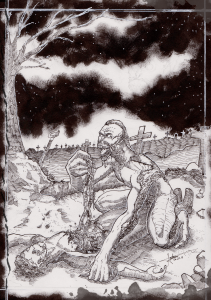
Ibwa Illustration by Andrew Rebuldela

One of the heads of the Aswang clan is called Ibwa who is based on a specific mythical creature.
Ibwa once mingled with the people in human form. Due to the thoughtless act of a mourner at a funeral, he became so addicted to the taste of human flesh, that it has since then been necessary to protect the corpse from him. He fears iron, and hence a piece of that metal is always laid on the grave. Holes are burned in each garment placed on the body to keep him from stealing them.
Xa Mul
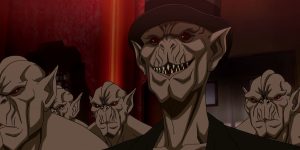
Another head of the Aswang Clan that is based on a mythical creature.
Xa Mul is an evil spirit who is said to swallow people alive without crushing them between his teeth. This spirit is believed in by the Isneg/ Apayao – an Austronesian ethnic group native to Apayao Province in the Philippines’ Cordillera Administrative Region.
Ibu
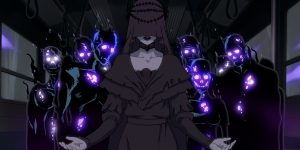
TRESE Episode 101 of TRESE Cr. COURTESY OF NETFLIX © 2021
Ibu is the Manobo goddess of death and the underworld. She is queen of the underworld whose abode is down below at the pillars of the world. All care, worries and trouble are no more in the underworld. Under the rule of the mistress, Ibu, souls work, eat and even marry.
In TRESE her emissary is a psychopomp – a guide of souls to the place of the dead. She uses the MRT/LRT as transportation for souls to her realm. In most Philippine myths the soul is ferried to the next world by means of a boat, crossing the sea to the underworld.
Santelmo
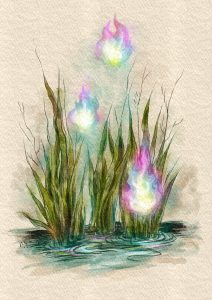
Santelmo Illustration by NightmareSyrup

CARLOS ALAZRAQUI as SANTELMO and SHAY MITCHELL as ALEXANDRA TRESE in episode 101 of TRESE Cr. COURTESY OF NETFLIX © 2021
Floating balls of fire, santelmo are said to be souls of people lost at sea. They are kept at bay by sprinkling salt on your sails. In other legends a santelmo is formed when sunlight comes into contact with spilled human blood.
In TRESE, the Santelmo that is called on by Alexandra is the spirit of the Great Binondo Fire, which happened in the 1950s. The depiction in TRESE has the santelmo as more fire elementals that can be called upon for help.
Tikbalang
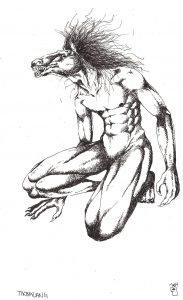
Tikbalang Illustration by Leandro Geniston
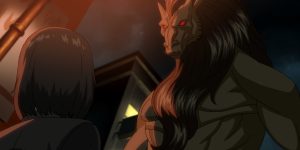
SHAY MITCHELL as ALEXANDRA TRESE and MANNY JACINTO as MALIKSI in episode 102 of TRESE Cr. COURTESY OF NETFLIX © 2021
Tikbalang have human bodies but horse heads, long limbed, when they sit their knees reach above their heads. Also described as a ‘tall thin black man with a horse’s head and terrible teeth’ they can be warded by turning your clothes inside out. It sometimes changes itself into the form of one of the relatives of its victim before it transforms back, scaring its victim. Can be controlled by taking three hairs from its head. They usually flirt with their victims.
In TRESE the Tikbalang is fond of races, as fits their horse like nature. This translates to one Tikbaalang in particular as the best racer around. In old legends if you want to control a tikbalang you have to ride it and wait until you grab three hairs from the top of its mane.
Amang Paso – The Red Dwende
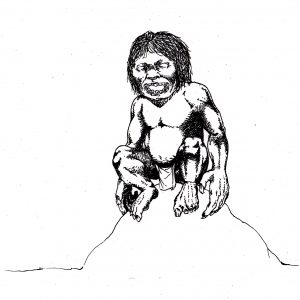
Dwende Illustration by Leandro Geniston
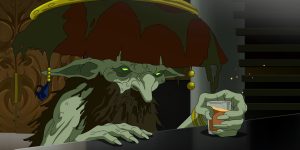
ERIC BAUZA as AMANG PASO in episode 104 of TRESE Cr. COURTESY OF NETFLIX © 2021
There are many kinds of dwende, black, white, green and red.
Red dwende are neutral, and can be beneficient or maleficent. They are fond of chicken sacrifices and teach prayers (oracion). They are strict when teaching the oracions. They also give agimat (Talismans). They are easy to invoke but are difficult to get rid of. If they like you they will go with you wherever you will be.
Amang Paso is a red dwende, with his own Lamang Lupa servant.
Wind Elementals / Wind People
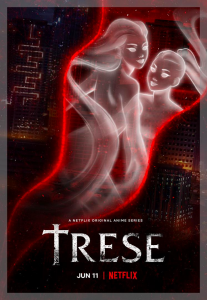
Hannah and Amie are ‘wind people’ – elementals that have power over the winds.
The closest creatures that fit this description are the Ilonggo awan-awan. They control the wind, rain, lightning, thunder, typhoon and the whirlwind. They could also bring about sickness and death. They live in the space between the clouds and the earth
Tiyanak
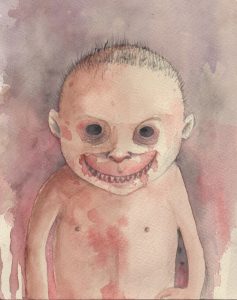
Tiyanak Illustration by Yanna Gemora
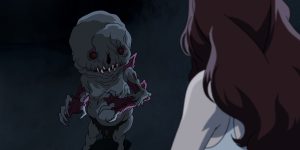
TRESE Episode 103 of TRESE Cr. COURTESY OF NETFLIX © 2021
Tiyanak are said to be the souls of babies that died without being baptized. They want to play with whoever passes by them, their favorite playmates are children with uncommon names. They crow like a bird and they cry to lure childless couples, then they wait until they find an opportunity to kill the couple by sucking their blood. It attracts people through its infant-like wails and when a person picks it up, the creature transforms into its hideous form and mauls the victim until they are dead.
In TRESE they are portrayed as ‘goblins’ that possess small corpses left in the woods. In the tiyanak legends their true form is a hideous creature that returned from death. The Tiyanak is also a shapeshifter, capable of taking on many forms.
Sigbin
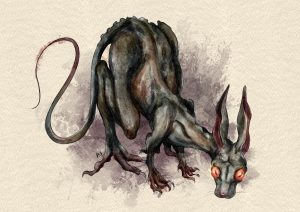
Sigbin Illustration by NightmareSyrup
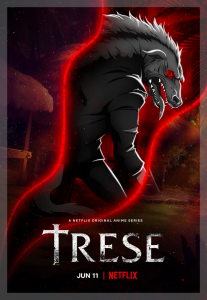
The Sigbin look like a locust or a frog or looks like a goat without horns, long hind legs like a kangaroo and large ears that it can flap. It has a long tail that it uses to whip victims. They drink the blood of their victims by sucking at their shadows. They steal the bodies of their victims so that they can eat it with their aswang masters. It shows itself at the full moon. It walks backwards and it can reach its head at the back of its feet. They are afraid of sharp objects including knives.
In TRESE Anton Trese’s familiars are Sigbin that are capable of shapeshifting into massive dogs. With this form, they function as very efficient trackers, being able to track through scent.
Datu Talagbusao
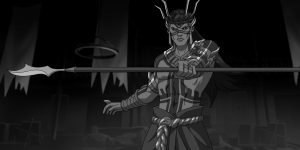
STEVE BLUM as DATU TALAGBUSAO in episode 104 of TRESE Cr. COURTESY OF NETFLIX © 2021
A Bukidnon god of war in the form of a warrior with big red eyes wearing a red garment. Talagbusao is “uncontrollable.” He can enter a mortal warrior’s body and make him fight fiercely to avenge a misdeed but he can also drive the warrior to insanity due to the gods excessive demand for the blood of pigs, chickens, or humans
In TRESE Talagbusao takes his place as the god of war, using his powers to manipulate the tides of battle.
=——————————————————–=
These are just some of the inspirations taken by TRESE from Philippine mythology, comment below if you know of more!
=————————————————————-=
TRESE in its animated form is nothing short of a masterpiece of high action with the backdrop of uniquely Philippine folklore. If you’re a mythology buff or just getting started it is a great introduction to the world of myths and folklore in the Philippines.
Please watch Trese on Netflix, now streaming!
=——————————————————-=
Written by Karl Gaverza
Copyright © Karl Gaverza

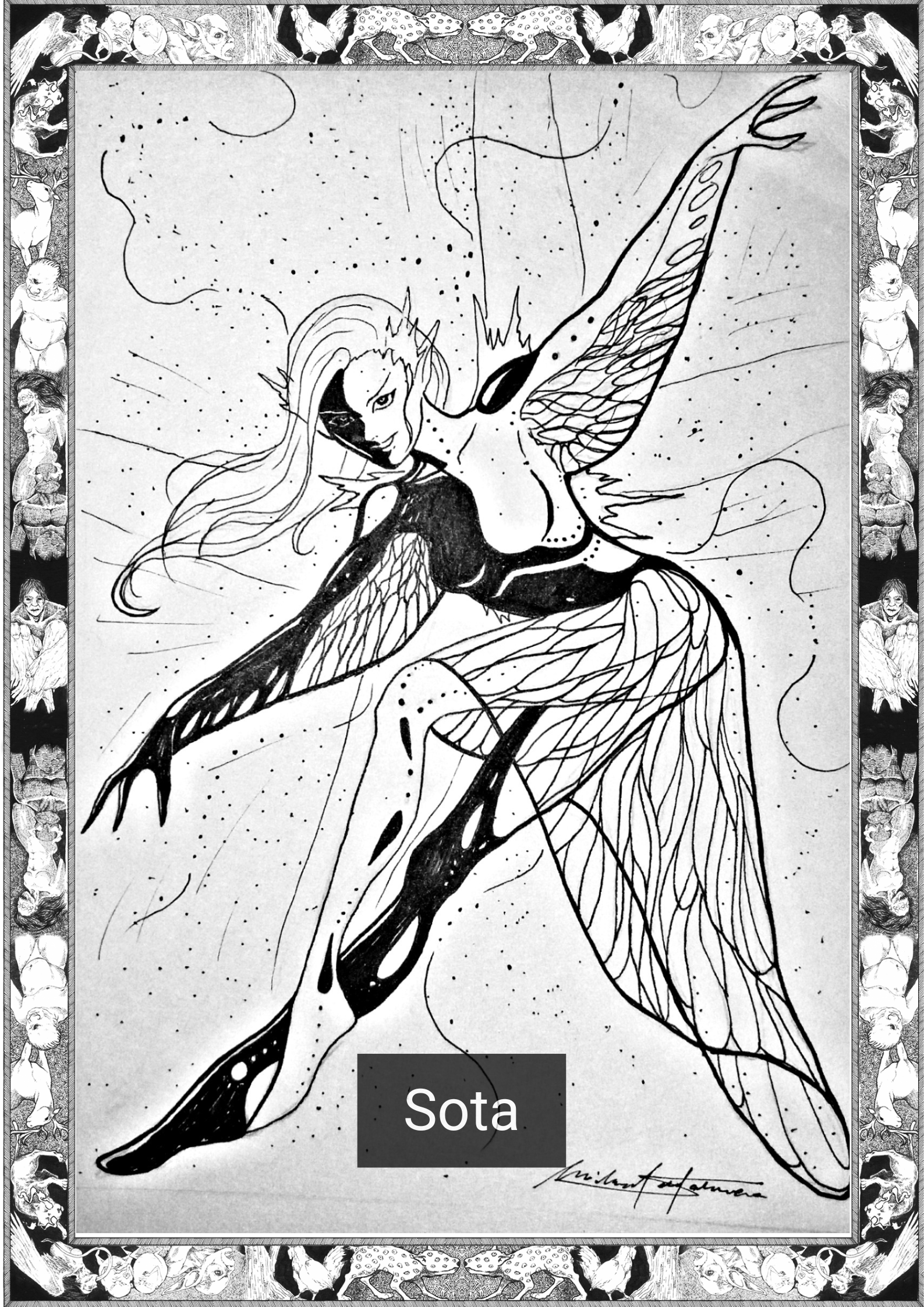
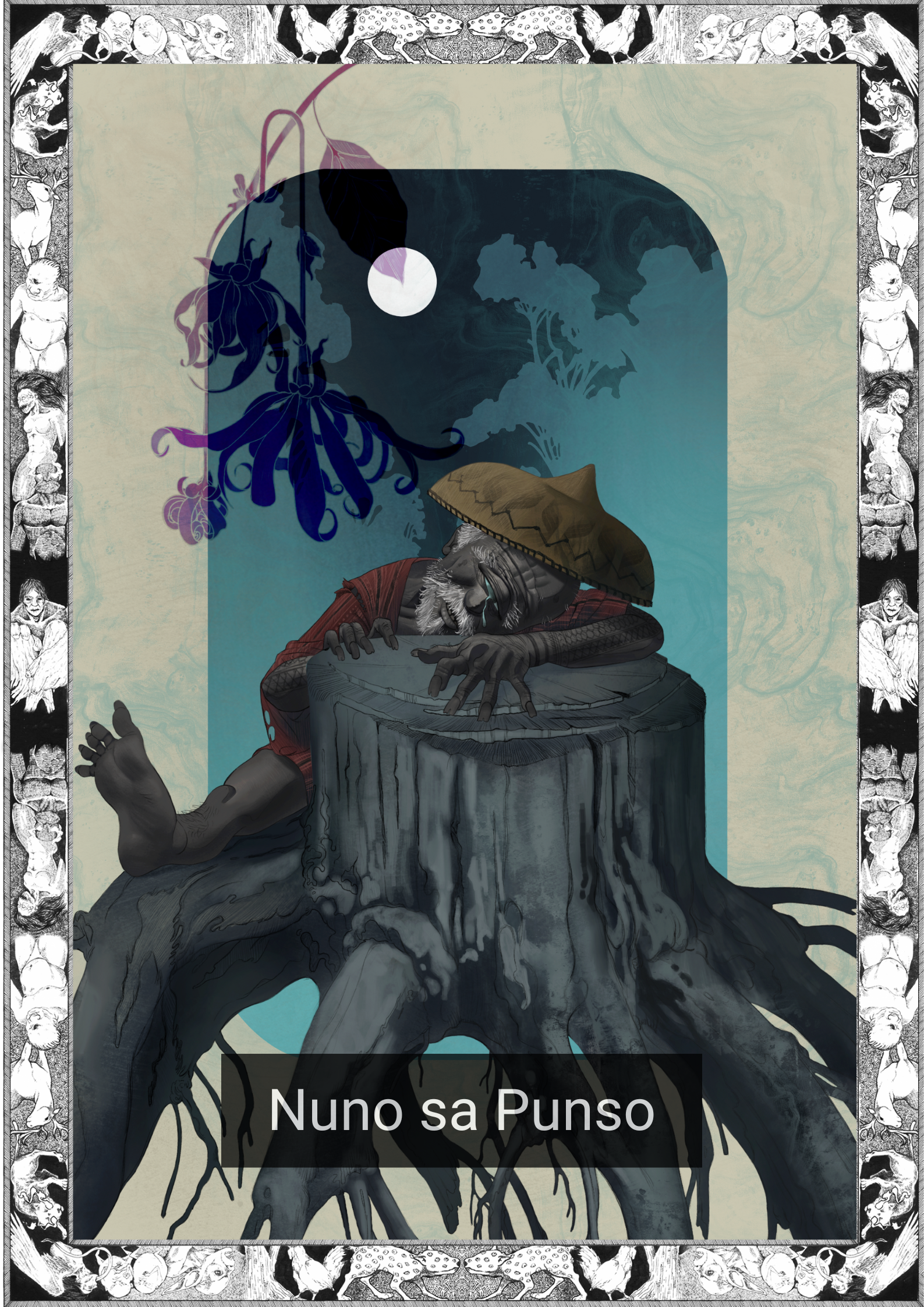
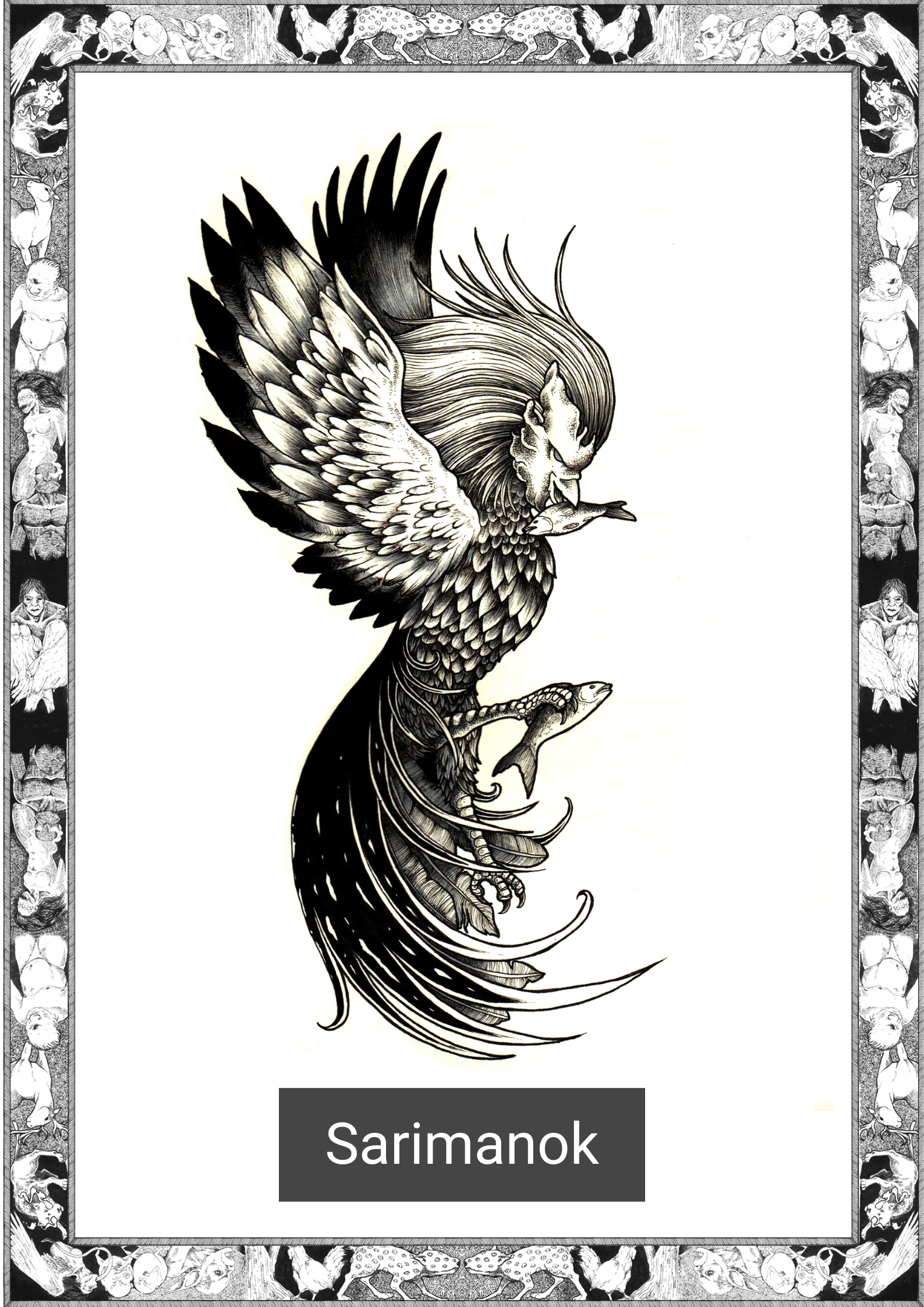
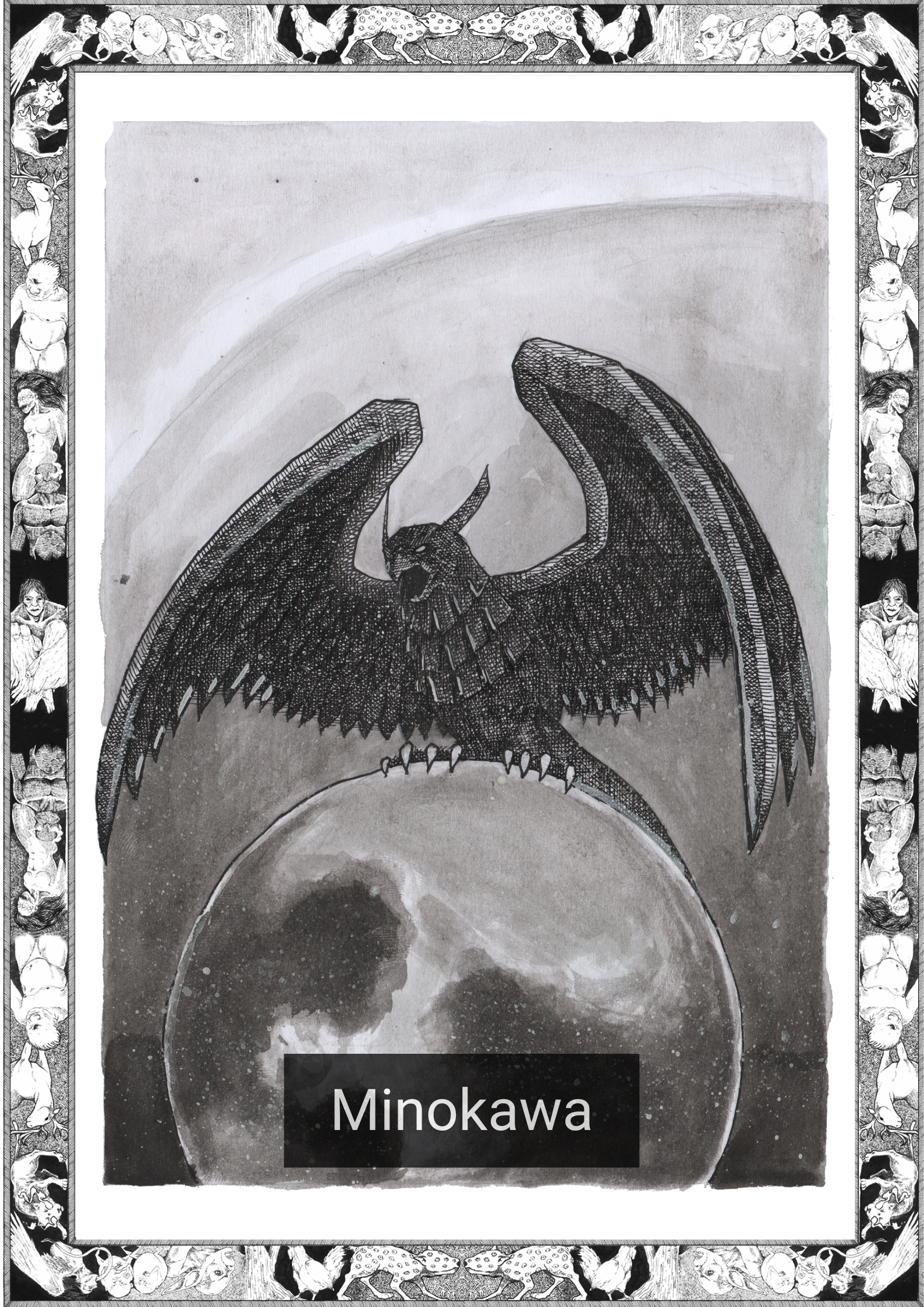
leonor laluna
the manananggal is most common though but not mentioned here though closest to aswang i guess. just that the idea of a half body-with the top half flying &the lower part left on the ground is hilarious. also that of engkanto and engkantadas &their prevalence of showing up at noon instead of midnight-being scared of salt-tales told by my mom to prod me &my siblings to take a nap after lunch i guess lol.a friend once said the Philippines is enchanted &is a supernatural center of sorts coz we have so many supernatural beings &stuff